Closing out the last days of 2023 and first days of 2024, I want to share the resent Peruvian Spider Monkey (Ateles chamek) REWILDING program activity thanks to the challenging work of scientists, veterinarians and volunteers of the Taricaya Ecological Reserve (www.taricayaecoreserve.org) and Kawsay Biological Center (www.kawsaycenterperu.org) in the southeastern Amazon rainforest of Peru.
As the only program of its kind in Peru, it is always gratifying to share with wildlife lovers this experience. Peruvian Spider monkeys listed as ‘Endangered’ in the IUCN Red List were extinct in the eastern area of the Tambopata National Reserve due to poaching, habitat loss and illegal pet trafficking before the creation of the Reserve.
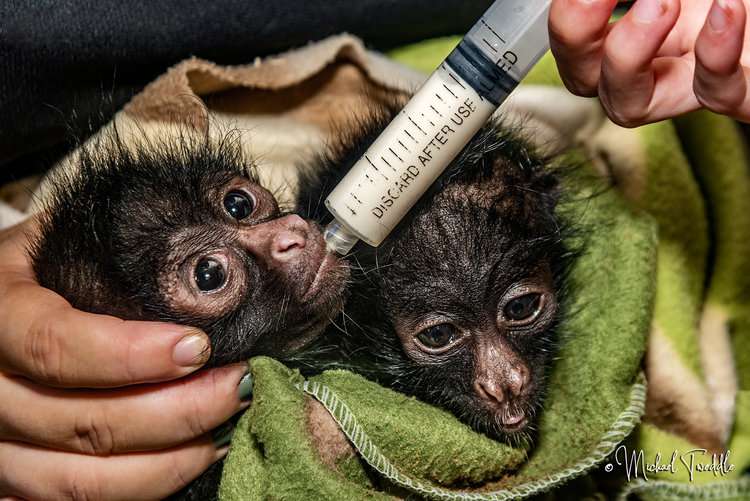
Rescued baby and young spider monkeys undergo strict care by veterinarians, biologists and volunteers. Many arrive in very bad condition after the mother was killed for meat for human consumption.
Most have not been weaned yet. Unfortunately, it is the process that these little ones have gone through being taken out of the forest with traumas, wounds, broken bones, malnourished and even with cartridge pellets in their bodies. Inside this drama, this is the story of the lucky ones, many die along the way.
Approximately three years of good care by vets and volunteers will have to pass, which is the process to form social groups.
Remember, monkeys are social animals and they live in family groups. In this case they are not related to each other, so the process of unifying groups must establish social roles according to their interaction’s behaviors.
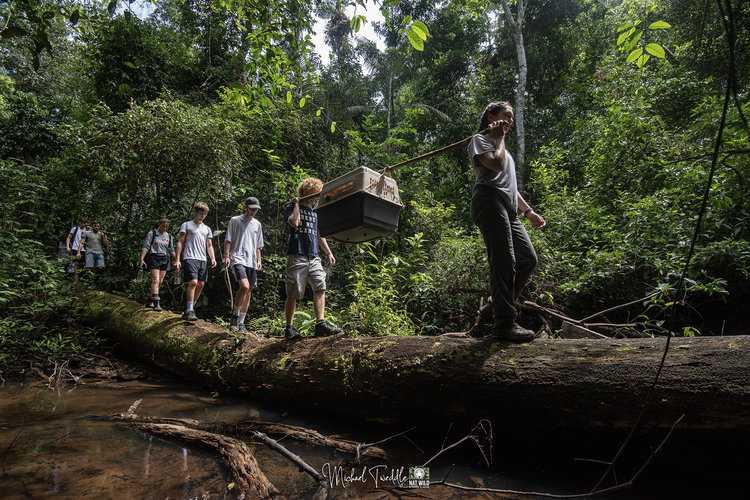
Once the social groups are formed and under the permits of local authorities (SERFOR- the wildlife office in Peru), the state entity that regulates the release of wildlife in their natural habitat, the Rewilding process begins.
The respective veterinary examination and blood test is done to each member of the group so that they are suitable for release. Guaranteeing that they are healthy and do not carry human diseases (Herpesvirus, Tuberculosis and Hepatitis) that could infect other species or those previously released.
Having identified the area where they will be released, this process reminds of old movies or black & white film safaris where species are carried in boxes on shoulders through the jungle as collector’s items. This time the story is different, reality takes us through the Amazon rainforest very similar to those movies but in kennels well mounted on wooden bars carried on the shoulders of veterinarians, biologists and volunteers on the way to freedom.
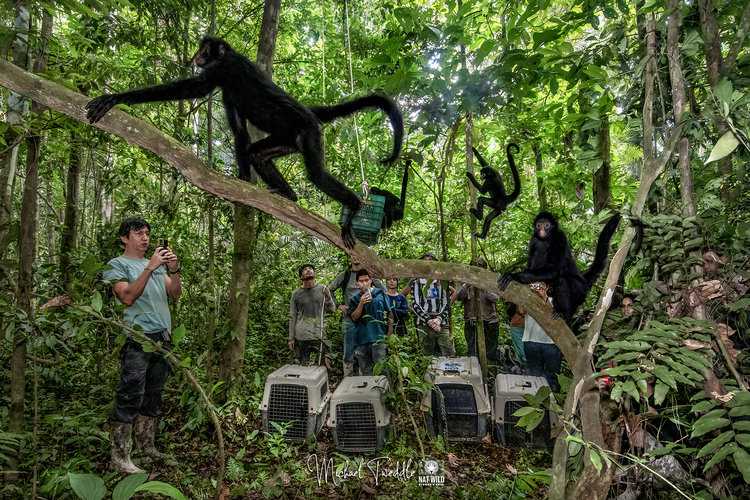
Once at the release site, they are released one by one. We are prohibited from any contact with them, whether they come to us or see us as part of the group. Let us remember that they are animals that have had human contact during the previous period, plus for the first time they will be independent in the forest and must look for their own natural food.
Knowing this last process, a team of ‘biologists’ camp and stay in the area for weeks monitoring and studying their adaptability. Initially helping with some food, until little by little they adapt to their new life, which fortunately, instinct helps them. In addition to visual tracking, they are also tracked via radio collars (when it is possible) to study their home range, food preferences, roosting trees and interaction with other previously released groups.
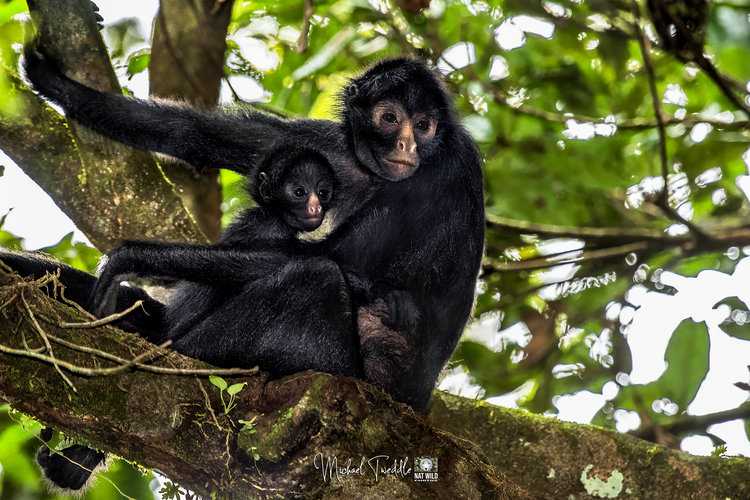
Some will do it, others won’t. Some won’t adapt to the wild, and others will be victims of predators. What is clear is a second chance that they are given by re-colonizing old areas of their natural distribution seeking to restore the natural chain and ecological balance in the area.
Since 2010, 64 spider monkeys have been released in 11 groups. Only the 40% made it. But to date, 22 natural births have been reported. There have been two generations of spider monkeys born in the wild since the beginning of this project. Now, there are stable groups leaving around this area. The efforts are focused on providing population viability, protecting the land and managing the current population.
“Rewilding projects may require ecological restoration or wildland engineering, particularly to restore connectivity between protected areas and reintroduce species to the sites from which they have been extinct”.
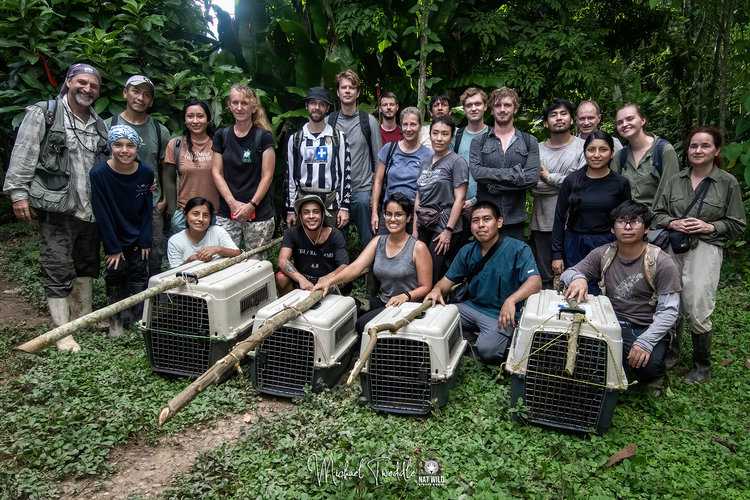
Lead Image: A rufous sibia, a bird commonly found in Nepal’s forests. Image by Martha de Jong-Lantink via Flickr (CC BY-NC-NEndangered Peruvian Spider Monkey – ‘Ateles chamek’ (Photo by Michael Tweddle / @Nat.Wild.Photos)D 2.0).
What you can do
Help to save wildlife by donating as little as $1 – It only takes a minute.
Michael Tweddle
Michael involves photography as a tool in favor of the environment. Taking him to travel through Peru and the world, focused on the good management of natural and cultural resources. Plus the practice of outdoor sports and ecotourism as alternatives of sustainable development.
- Web |
- More Posts(3)
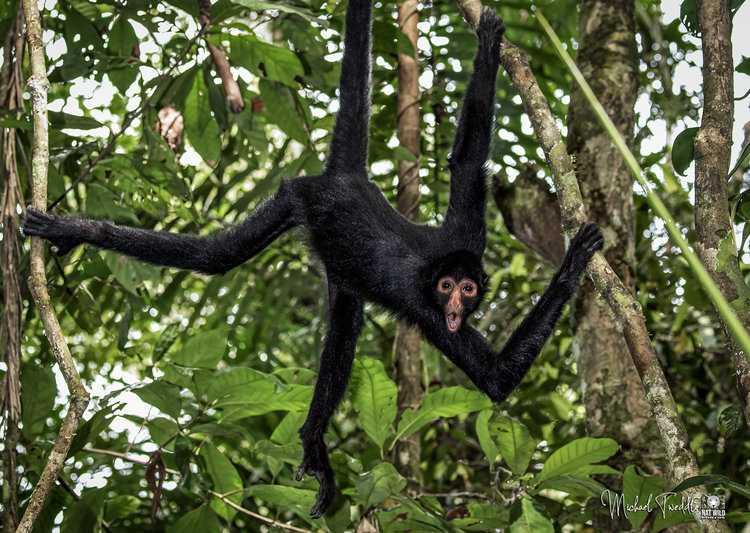






Leave a Reply